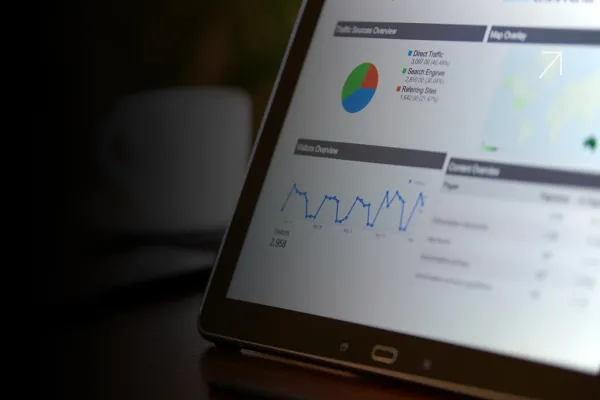Healthcare marketing has changed forever. Patients expect more than generic campaigns. They want relevance, accuracy, and continuity. Doctors expect interactions that respect their time and deliver value. Regulators demand compliance at every step. The only way to meet these expectations is with personalized marketing strategies built on patient data.
But here’s the challenge: in healthcare, data can’t just be used the way e-commerce brands use it. It has to be compliant, secure, and patient-first. That’s why personalized healthcare marketing requires a very specific approach, one that blends healthcare content marketing, digital tools, and real-world patient journeys into a single system.
This guide breaks down how to do personalized healthcare marketing with patient data, step by step.
Step One: Build a Patient-Centric Marketing Strategy
Personalization starts with clarity. Before running campaigns, healthcare marketers must define the goals, audiences, and guardrails for using patient data.
Map the patient journey
A modern marketing strategy doesn’t start with channels. It starts with journeys. Where do patients first interact with their doctor, with a search engine, or with a hospital website? Mapping these points helps marketers identify when and how to deliver relevant, compliant messages.
Segment by need, not just demographics
Healthcare marketers often stop at age, gender, or location. Personalization goes deeper. A diabetic patient needs a different journey than a cardiac patient, even if both are 45 years old. Segmentation by condition, treatment stage, or behavior creates meaningful personalization.
Embed compliance into the strategy
Healthcare professionals and regulators won’t tolerate shortcuts. Patient data must be used with consent, anonymization, and strict access controls. Compliance isn’t a block on strategy; it’s the foundation.
Step Two: Turn Patient Data into Actionable Insights
Data without structure is noise. To power personalized healthcare marketing, raw patient data must be converted into insights.
Integrate data from multiple touchpoints
Healthcare providers, insurance players, and digital apps all generate data. But siloed data prevents personalization. Integrating CRM, EMR, and campaign platforms into one view of the patient is the first step.
Use analytics to identify patterns
It’s not enough to collect data. You need analytics to uncover what patients respond to, whether it’s SMS reminders, WhatsApp nudges, or educational webinars. These patterns guide the personalization playbook.
Align insights with healthcare content marketing
Patient data tells you what people need. Content is how you deliver it. If data shows patients drop off after diagnosis, your healthcare content marketing strategy should focus on onboarding support, FAQs, and adherence education.
Step Three: Deliver Personalization Through Digital Marketing
Personalization becomes real when it reaches patients at the right time, on the right channel. That’s where digital marketing execution comes in.
Multi-channel engagement
Patients don’t live on one channel. Some prefer WhatsApp, others email, others in-app notifications. A strong martech system ensures messages adapt to each patient’s preferred channel, without adding manual work for marketers.
Real-time triggers
Patient data should activate campaigns instantly. A missed appointment triggers a reminder. A refill gap triggers an adherence message. Personalization is powerful only when it responds in real time.
Patient-first, not product-first
The golden rule: personalization should add value to the patient, not push products. Educational videos, disease-management tips, or reminders about preventive check-ups build trust that drives long-term outcomes.
Step Four: Involve Healthcare Professionals in the Journey
Doctors and healthcare professionals remain the most trusted voices in the healthcare system. Personalized healthcare marketing must integrate them.
Equip doctors with digital tools
If a doctor prescribes therapy, digital follow-ups can reinforce the message. Giving HCPs access to portals or apps that align with campaigns ensures consistency between what’s said in clinic and what’s sent digitally.
Doctor-triggered personalization
Patient data can be activated at the point of care. For example, when a doctor prescribes a new therapy, the system can automatically enroll the patient in a personalized support journey. That’s real-world personalization.
Strengthen HCP trust through consistency
If patients receive conflicting messages from doctors and campaigns, trust erodes. Personalization must align with HCP recommendations, making campaigns a support system, not a competing voice.
Step Five: Address the Healthcare Insurance Market and Providers
Personalization in healthcare isn’t limited to patients; it also extends to the healthcare insurance market and providers.
Personalization for insurance members
Insurers have massive patient datasets. Personalized healthcare marketing helps them improve adherence, reduce claims, and build member loyalty. A reminder to refill a prescription isn’t just good for the patient, but it also reduces costs for insurers.
Healthcare provider personalization
Hospitals and clinics use personalization to increase patient retention. For example, automated reminders for annual checkups or targeted content for chronic patients improve both outcomes and loyalty.
Partnership across the ecosystem
When insurers, providers, and pharma brands align, personalization becomes powerful. Data flows across the ecosystem, enabling more accurate targeting, while maintaining compliance in healthcare.
Step Six: Track Digital Healthcare Market Trends
The digital healthcare market is moving fast. What feels advanced today may be basic tomorrow. CMOs need to stay ahead.
AI-powered personalization
Artificial intelligence is driving predictive personalization, anticipating what patients need before they ask. CMOs who invest early in AI-enabled healthcare marketing tools will lead the next wave.
Gamification for patient activation
Personalization isn’t always serious. Gamified trackers, milestone badges, or rewards for adherence increase patient activation. These digital healthcare market trends make personalization engaging, not overwhelming.
Future-proofing personalization
The healthcare industry is shifting toward value-based care. Personalization strategies built today must be flexible enough to adapt as regulations, technologies, and patient expectations evolve.
Conclusion
Personalized healthcare marketing isn’t about pushing more messages. It’s about using patient data to deliver the right message at the right time, in the right channel, with compliance built in. When done right, personalization improves patient engagement, strengthens doctor trust, and proves ROI to boards.
The CMOs who master personalization today will define the leaders of the digital healthcare market tomorrow. The ones who delay will find themselves chasing patients who’ve already moved on.
Your Next Step in Personalized Healthcare Marketing
Patient data is the foundation. The system you build on top of it determines whether you create value or noise. CMOs who design compliant, data-driven personalization journeys will win patient trust, HCP alignment, and market growth. The future of healthcare marketing is personal; and the time to act is now.





